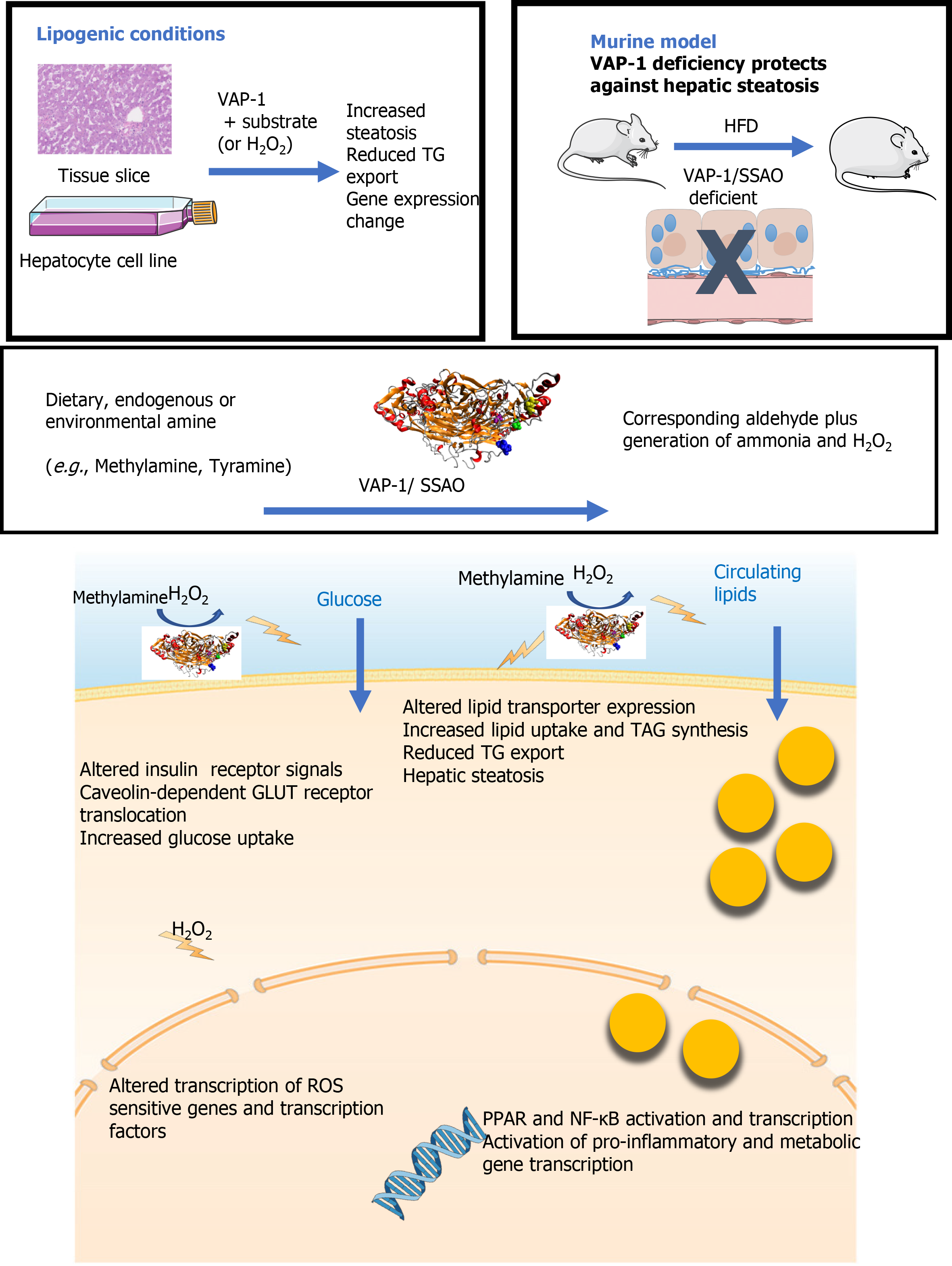Copyright
©The Author(s) 2020.
World J Hepatol. Nov 27, 2020; 12(11): 931-948
Published online Nov 27, 2020. doi: 10.4254/wjh.v12.i11.931
Published online Nov 27, 2020. doi: 10.4254/wjh.v12.i11.931
Figure 5 Graphical summary the impact of vascular adhesion protein-1 on the hepatic pathogenesis of non-alcoholic fatty liver disease.
Exposure of human liver tissue or hepatocytes in culture to vascular adhesion protein-1 (VAP-1) in the presence of endogenous or exogenous (methylamine) substrate led to a reduction in TG export and increased steatosis. In tissue this was accompanied by changes in metabolic gene expression. VAP-1 deficient mice are protected against hepatic steatosis when fed a high fat diet. These findings can be explained by the enzymatic capacity of VAP-1 to reduce amine substrates to the corresponding aldehyde accompanied by generation of potent signaling molecules such as hydrogen peroxide. Addition of hydrogen peroxide to our culture systems recapitulated the effects of VAP-1 activation. Our previous studies suggest that increased inflammation, steatosis and fibrosis in the context of non-alcoholic fatty liver disease in part relate to the ability of VAP-1 to support leukocyte recruitment across endothelial cells, to prime hepatic glucose uptake and to activate hepatic stellate cells. We now show additional effects on transcription of key lipid transporter molecules and transcription factors. The upregulation of FABP4, FABP2, FATP3-5 and LRP1 along with the VLDLR which alter uptake and intracellular targeting of lipid molecules, Transport of fatty acids to the nucleus by receptors such as FABP2 will also activate nuclear receptors such as PPARs and NF-κB, hence influencing gene transcription. VAP-1: Vascular adhesion protein-1; HFD: High fat diet.
- Citation: Shepherd EL, Karim S, Newsome PN, Lalor PF. Inhibition of vascular adhesion protein-1 modifies hepatic steatosis in vitro and in vivo. World J Hepatol 2020; 12(11): 931-948
- URL: https://www.wjgnet.com/1948-5182/full/v12/i11/931.htm
- DOI: https://dx.doi.org/10.4254/wjh.v12.i11.931









